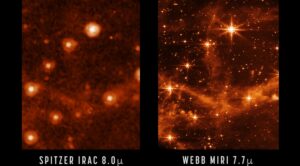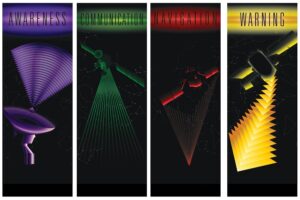Virgin Orbit announces next launch, dubbed 'Straight Up'
Tuesday, 10 May 2022 01:10 Virgin Orbit (Nasdaq: VORB) has entered flight preparation mode for its forthcoming launch, Straight Up, that will support the United States Space Force's STP-28A mission. After departing Virgin Orbit's Long Beach rocket factory on Thursday, April 28, 2022, the rocket arrived at the Mojave Air and Space Port. It will support the Rocket Systems Launch Program (RSLP) and will carry payloads for th
Virgin Orbit (Nasdaq: VORB) has entered flight preparation mode for its forthcoming launch, Straight Up, that will support the United States Space Force's STP-28A mission. After departing Virgin Orbit's Long Beach rocket factory on Thursday, April 28, 2022, the rocket arrived at the Mojave Air and Space Port. It will support the Rocket Systems Launch Program (RSLP) and will carry payloads for th Roscosmos boss calls to hold Elon Musk 'accountable' for supporting Ukraine 'fascists'
Tuesday, 10 May 2022 01:10 Elon Musk has responded after Dmitry Rogozin, the head of Russia's federal space agency Roscosmos, sent a message to Russian media accusing him of supporting "fascist forces" in Ukraine.
The accusation by Rogozin, shared to Twitter by Musk, comes after the chief executive of SpaceX sent user terminals for its Starlink satellite-internet system to Ukraine in February at the request of offic
Elon Musk has responded after Dmitry Rogozin, the head of Russia's federal space agency Roscosmos, sent a message to Russian media accusing him of supporting "fascist forces" in Ukraine.
The accusation by Rogozin, shared to Twitter by Musk, comes after the chief executive of SpaceX sent user terminals for its Starlink satellite-internet system to Ukraine in February at the request of offic DLR Land Down Under
Tuesday, 10 May 2022 01:10 In preparation for their ReFEx rocket launch campaign from Australia, the DLR team are visiting spaceport partner Southern Launch. As part of their visit, the DLR team will be visiting Southern Launch's spaceports; the Whalers Way Orbital Launch Complex and the Koonibba Test Range, as well as meeting with key personnel across the Australian space industry.
DLR is the Federal Republic of Ge
In preparation for their ReFEx rocket launch campaign from Australia, the DLR team are visiting spaceport partner Southern Launch. As part of their visit, the DLR team will be visiting Southern Launch's spaceports; the Whalers Way Orbital Launch Complex and the Koonibba Test Range, as well as meeting with key personnel across the Australian space industry.
DLR is the Federal Republic of Ge Phantom Space places order for more than 200 Ursa Major rocket engines
Tuesday, 10 May 2022 01:10 Phantom Space Corporation, a space applications company, has announced an agreement to purchase more than 200 rocket engines from Ursa Major, America's only independent pure-play rocket propulsion company. The order includes Ursa Major's 5,000-Pound Thrust Hadley engines and the new 50,000-pound thrust Ripley engines. By using Ursa Major's Hadley engines, Phantom's Daytona rocket is slated for o
Phantom Space Corporation, a space applications company, has announced an agreement to purchase more than 200 rocket engines from Ursa Major, America's only independent pure-play rocket propulsion company. The order includes Ursa Major's 5,000-Pound Thrust Hadley engines and the new 50,000-pound thrust Ripley engines. By using Ursa Major's Hadley engines, Phantom's Daytona rocket is slated for o UK blogger detained in Baikonur confirms release from custody after issued fine
Tuesday, 10 May 2022 01:10 UK blogger Benjamin Rich, who was recently detained near a launch pad in the Baikonur spaceport, said on Sunday that the Russian police released him after questioning and handed out a fine.
On Saturday, Roscosmos chief Dmitry Rogozin said that UK citizen Benjamin Rich and a Belarusian citizen Alina Zelupa were detained during unauthorised passage near the 112 launch pad in Baikonur and tak
UK blogger Benjamin Rich, who was recently detained near a launch pad in the Baikonur spaceport, said on Sunday that the Russian police released him after questioning and handed out a fine.
On Saturday, Roscosmos chief Dmitry Rogozin said that UK citizen Benjamin Rich and a Belarusian citizen Alina Zelupa were detained during unauthorised passage near the 112 launch pad in Baikonur and tak NASA's InSight Records Monster Quake on Mars
Tuesday, 10 May 2022 01:10 NASA's InSight Mars lander has detected the largest quake ever observed on another planet: an estimated magnitude 5 temblor that occurred on May 4, 2022, the 1,222nd Martian day, or sol, of the mission. This adds to the catalog of more than 1,313 quakes InSight has detected since landing on Mars in November 2018. The largest previously recorded quake was an estimated magnitude 4.2 detected Aug.
NASA's InSight Mars lander has detected the largest quake ever observed on another planet: an estimated magnitude 5 temblor that occurred on May 4, 2022, the 1,222nd Martian day, or sol, of the mission. This adds to the catalog of more than 1,313 quakes InSight has detected since landing on Mars in November 2018. The largest previously recorded quake was an estimated magnitude 4.2 detected Aug. Sliding Into the Weekend Like - Sols 3466-3468
Tuesday, 10 May 2022 01:10 It's been a challenging week in Gale crater, but Curiosity and the rover team are ready to put those challenges behind us as we head into a busy weekend plan. I've been on shift as LTP and SOWG Chair this week, and we've had a handful of issues related to difficult terrain, being in a good orientation for communication, and having small downlink volumes available for planning.
Today was a
It's been a challenging week in Gale crater, but Curiosity and the rover team are ready to put those challenges behind us as we head into a busy weekend plan. I've been on shift as LTP and SOWG Chair this week, and we've had a handful of issues related to difficult terrain, being in a good orientation for communication, and having small downlink volumes available for planning.
Today was a Rocket Lab launches BRO-6 for Unseenlabs
Tuesday, 10 May 2022 01:10 Unseenlabs, the European leader in radio frequency (RF) signals detection from space, successfully launched its seventh satellites dedicated to the geolocation of vessels at sea on may 3, with rocket lab launcher. In total, Unseenlabs has deployed seven satellites since 2019 and will launch other satellites in 2022.
Unseenlabs' constellation is designed to provide clients with data to foll
Unseenlabs, the European leader in radio frequency (RF) signals detection from space, successfully launched its seventh satellites dedicated to the geolocation of vessels at sea on may 3, with rocket lab launcher. In total, Unseenlabs has deployed seven satellites since 2019 and will launch other satellites in 2022.
Unseenlabs' constellation is designed to provide clients with data to foll Plans unveiled to better connect space industries in Scotland and the UAE
Tuesday, 10 May 2022 01:10 Globally focused strategic space marketing firm AstroAgency, headquartered in Edinburgh, has announced it will team up with a Dubai-based space investment and advisory company AzurX, to support space businesses in both regions, access new development opportunities and forge collaborative partnerships.
The two organisations boast a global space client base, with AzurX acting as the trusted
Globally focused strategic space marketing firm AstroAgency, headquartered in Edinburgh, has announced it will team up with a Dubai-based space investment and advisory company AzurX, to support space businesses in both regions, access new development opportunities and forge collaborative partnerships.
The two organisations boast a global space client base, with AzurX acting as the trusted China launches the Tianzhou 4 cargo spacecraft
Tuesday, 10 May 2022 01:10 In the latest stage in its space station program, China launched the Tianzhou 4 cargo spacecraft early on Tuesday morning, to transport fuel and supplies to its Tiangong space station, according to the China Manned Space Agency, or CMSA.
In a brief statement, the agency said that a Long March 7 carrier rocket blasted off from the Wenchang Space Launch Center in Hainan province at 01:56 am,
In the latest stage in its space station program, China launched the Tianzhou 4 cargo spacecraft early on Tuesday morning, to transport fuel and supplies to its Tiangong space station, according to the China Manned Space Agency, or CMSA.
In a brief statement, the agency said that a Long March 7 carrier rocket blasted off from the Wenchang Space Launch Center in Hainan province at 01:56 am, JWST entering “home stretch” of commissioning
Tuesday, 10 May 2022 00:19
The James Webb Space Telescope is operating better than expected as the spacecraft enter the final stages of commissioning, project officials said May 9.
The post JWST entering “home stretch” of commissioning appeared first on SpaceNews.
Globalstar agrees terms with “global customer” for terrestrial connectivity
Monday, 09 May 2022 21:20
Globalstar has signed a term sheet with a “large, global customer” to start deploying some of its spectrum for terrestrial use “in the U.S. and beyond,” the satellite operator said May 5.
The post Globalstar agrees terms with “global customer” for terrestrial connectivity appeared first on SpaceNews.
Webb telescope's first full color, scientific images coming in July
Monday, 09 May 2022 16:40
Get ready for a summer blockbuster.
The James Webb Space Telescope will produce "spectacular color images" of the cosmos in mid-July—its first observations dedicated to its mission of scientific discovery, an astronomer overseeing the project said Monday.
The successor to Hubble has spent the last five months aligning its instruments in preparation for the big reveal, with scientists deliberately remaining coy about where the cameras will be pointed.
"We'd really like it to be a surprise," Klaus Pontoppidan, a scientist at the Space Telescope Science Institute in Baltimore told reporters, adding that the secrecy was partly due to the first targets not yet being finalized.
NASA and its partners the European Space Agency (ESA) and Canadian Space Agency (CSA) formed a committee to create a ranked list of objects, which they now intend to work through.
South Korea’s new president seeks independent space agency, deeper US space cooperation
Monday, 09 May 2022 14:52
South Korea’s newly elected president Yoon Suk-yeol will take office May 10 with a set of ambitious space projects aimed at making the country a major space power by 2035.
The post South Korea’s new president seeks independent space agency, deeper US space cooperation appeared first on SpaceNews.
Op-ed | A comprehensive triad for space resilience – more than just numbers
Monday, 09 May 2022 14:05
To meet the threat to U.S. space systems, DoD needs to broaden its approach to resilience to fully embrace reconstitution.
The post Op-ed | A comprehensive triad for space resilience – more than just numbers appeared first on SpaceNews.

